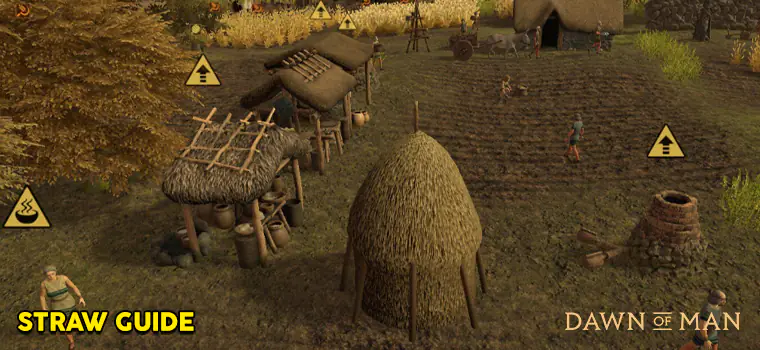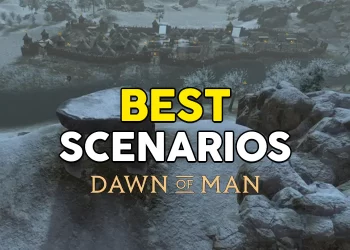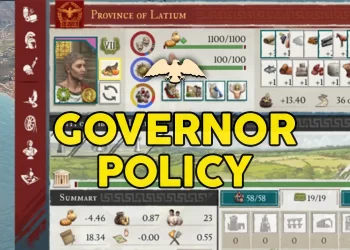Animal domestication, herding, and husbandry are the most important things for sustaining bigger populations in the Dawn of Man. You’ll need domestic animals for a steady supply of meat, milk, and wool (for winter clothing). Animals also help you plow your farms in the spring.
Here is how to get goat, sheep, pig, cattle, donkey, and horse in the Dawn of Man. Animals you can domesticate in the Dawn of Man:
- Goat: Is a tamed ibex. Produces 1 milk which is a full meal and can be crafted into cheese. Slaughtered for 3 meat, 2 skins, and 1 bone.
- Sheep: Is a tamed mouflon. Produces 1 wool which is the material of superior wool outfit. Slaughtered for 3 meat, 2 skins, and 1 bone.
- Pig: Is a tamed boar. Slaughtered for 4 meat, 2 skins, and 1 bone.
- Cattle: Is a tamed aurochs. Produces 2 milk. Can pull plows. Consumes more food and straw. Slaughtered for 6 meat, 4 skins, and 1 bone. (Superior to goats and pigs.)
- Donkey: Is a tamed wild donkey. Can pull carts and plows. Slaughtered for 4 meat, 2 skins, and 1 bone.
- Horse: Is a tamed wild or feral horse. Can pull carts and plows. Slaughtered for 5 meat, 2 skins, and 1 bone. (Superior to donkeys.)
Pro tip: Children can tame animals in Dawn of Man. You should manually tame animals with children to maximize your overall workload. Children can’t fight, can’t harvest, can’t craft, can’t mine, and can’t chop trees. Yet, they can be utilized for taming wild animals.
Always have enough sheep that will produce the required amount of wool for your populations wool outfit need. Also make sure to get some domestic animals that can plow your fields and pull your carts. The rest of your animals should be about producing enough food for your settlement. Of course, skins and bones would be extras.
Dogs & Wolves of Dawn of Man
There is one more animal you can tame in the Dawn of Man and it’s a wolf. Tamed wolfs turn into dogs. They’re not livestock, but they have other uses. A dog can fight!
Dogs follow hunters and fight with aggressive animals during hunts. Not only that but they also fight against raiders at the gates during raids. I usually let my dogs go for melee and attack raiders with bows from distance. That’s the best way of fighting raiders because you lose no human. Also check Dawn of Man hunting guide to hunt with zero casualties.
Dogs die in battle, by lightning strikes and of old age. But you can always tame new dogs from wilderness. Also new dogs join to the village from time to time randomly. Taming wolfs is slightly challenging though. First you need to hunt older wolfs completely. Otherwise, they’ll attack you during the taming process of younger ones.
Tamable animals never go extinct. So, you’re good. Still, animal extinction is a sad thing. Though Dawn of man animal extinction can be fixed with custom scenarios if that’s your wish.
Dawn of Man Straw Guide


Straw is the primary Dawn of Man animal food. I can’t stress enough how important it is to stack straw.
Animals eat straw. If there is no straw available, they eat grain instead. They don’t eat anything else which is a very bad mechanic. Grain is your primary food source; you don’t want to feed grain to your animals. That’s why barley is the best crop type of Dawn of Man. Barley produce 50% more straw in each harvest. I usually plant nothing but barley. And maybe one 5×5 einkorn just in case, because einkorn is 25% disease resistant. Gotta prepare for bad days you know.
Anyways, straw is also used in advanced buildings. So, you’ll definitely need bulk straw in the mid-late game eras. Here is one mistake to avoid. Don’t upgrade all your buildings at the same time. That will drain all your straw stockpile, hence killing all your livestock.
DAWN OF MAN ANIMAL EXTINCTION GUIDE
Here is a quick tip, haystack preserve straw 1.5 times longer whereas warehouse preserve 2.5 times more. Now that doesn’t mean you don’t need haystack because you can’t fill your warehouses with straws. What I do is to build few haystacks very close to stables so that they’re used frequently. The rest will be stored in warehouses to stay longer and be used in buildings.













